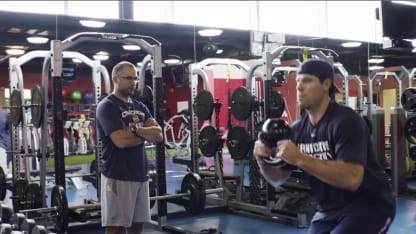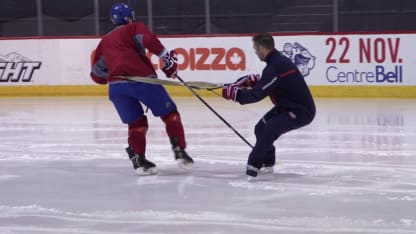MD:You get them ready to play, you've talked about how your job has evolved. I find since I retired, it's evolved more. I couldn't help but notice coming into the dressing room after practices, players wearing a sports shirt, I guess you could call it, and in the back, there's a little chip that they've been wearing. What exactly is that for and how does that help your work with them?
PA: The toughest thing in hockey is to calculate the player load. There isn't much research that we've seen that's been able to calculate that load. There's a lot of research done on rugby, football, and soccer, but not on hockey. Recently, the Catapult company came up with an algorithm that we can use to detect movement on the ice. What's tough to detect on the ice is, because it's a gliding sport, it's tough to detect movement in terms of what is considered a stride. Catapult got involved in the NHL and now we're able to see the player's load that they do during practices and during the exhibition games that we were allowed to track. Now we use that data for return to play, so we know exactly what type of load the player is doing during a hard practice and also during a game. We use that to make better decisions. It's not like one tool you use - it's to help make better decisions as a group. We also use the data when we track acute and chronic fatigue during the season.
MD: Offseason, in-season, testing, collecting data. Sport science is now involved in your job. What is the biggest challenge for Pierre Allard in the 2016-17 NHL?
PA: It's to take all that information and try to make sense of it. It's a long season - it's a marathon - and you want to make sure the players are ready to play every night. In order to do that, you have to be able to make good decisions based on data you collect. It's differentiating between "noise" and "signal". You try to take the signal to know if the player is tired or not. That's the biggest challenge.
MD: Pierre Allard, thank you so much.
PA:Thank you.



